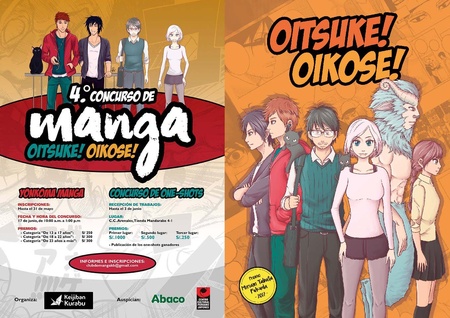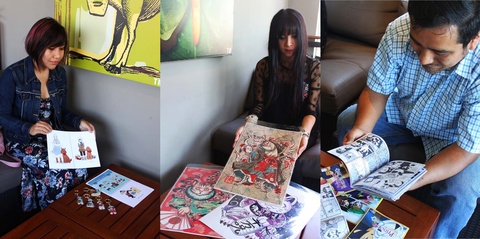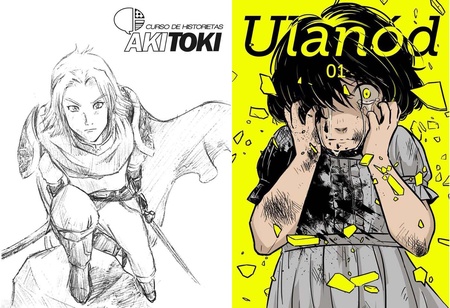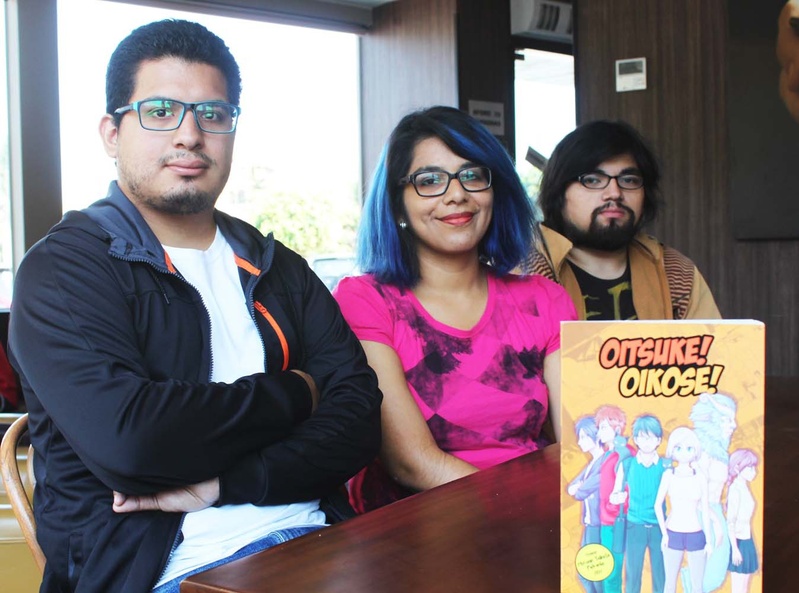The cult of Japanese comics, or manga , in Peru has spread so much in recent years that we could well be facing the second element of Japanese identity that spreads in this country after gastronomy. Although the majority of its followers are not of Japanese descent, through groups such as Keijiban Kurabu, an organization made up of teachers and students of the Japanese language that spreads the culture of this country, a legion of mangakas , otakus and scholars of the comic books.
They have organized the Oitsuke! Manga Contest! Oikose!, which this year will have its fourth edition, and which has published the 2017 winners, thanks to the publishing label Paracaídas. During this summer's Natsumatsuri, the three winning stories (created by Miguel Mestanza, Rosa Fernández and Elliot H. Jhones) were presented, with the aim of contributing to the dissemination of manga in Peru and encouraging its practice as a means of artistic expression.

This year, in addition, Keijiban Kurabu will organize the First Lima Manga Fair in June, at the Peruvian Japanese Cultural Center, which will bring together cartoonists, scriptwriters and illustrators, new and professional, who will spread Japanese culture through this form of expression which has spread in Peru since the eighties, through the cartoons that were broadcast on television, and which gained greater relevance in the following decades through its cultists.
japan anime
Stores, magazines, fan circles and endless activities show the value that Japanese comics have in Peru, from the years in which Sugoi magazine was created in the nineties, until recent times when there has been an explosion of cartoonists. amateur with a lot of potential. Miguel Mestanza, winner of the last contest with the comic “Blanca”, says that manga is so broad that you can find everything, especially Japanese folklore.
“Historical periods, the customs and ways of life of Japan, in addition to portraying their way of seeing the world, the oriental vision, are in these comics,” explains the graphic designer, who is compiling his “ one shot ” stories (self-contained). in which the Peruvian reality appears through its scenarios. For Rosa Fernández, through these comics she has learned about peculiar aspects of Japanese culture such as the role of women and the idealization of love.
“I think that for many, manga connects with other types of people,” adds Elliot, in reference to the shy, or to people who discover situations different from those that can be found in American comics. “His style is impactful,” he adds, without failing to mention another notable aspect: the versatility of his stories. At the First Lima Manga Fair there will be different tables by category for its nearly forty exhibitors in illustration, original comics, BL ( Boys Love ), among others.
Infinite universe
If comics have shown anything, based on their heroes and sagas, it is that they can be infinite, despite the generational change. Some Peruvian manga artists shared their memories of their connection with this cultural form that continues to attract the attention of young people to Japanese culture. “ Sailor Moon was my favorite series, its influence on my life was such that I still recognize how it affected my way of dressing, thinking and my way of drawing and putting together narratives,” says Antonella Morelli, who as a result of this hobby began studying Japanese. .
For Natalia Barrenechea, manga has been vital to form her artistic tastes, “and also to learn about certain norms of conduct that are sometimes ignored in our society.” His illustrations are greatly influenced by “ oni ”, Japanese demons or ogres. Luis Quispe, who has been drawing comics since he was in school, finds it fascinating to see drawings by very talented kids and projects like that of Paulo Rivas, from the Perro Muerto publishing house, which has been publishing manga for almost 20 years.
Luckily, in times of the internet and social networks, their proposals are available online, replicating themselves in souvenirs, clothing and toys, among others. This is the case of Julia Rodríguez , Natalia Barrenechea , Paulo Rivas and many more who are beginning to make their way, such as Ana Molina , who, after having been studying in China, will travel to Japan this year to attend a seminar on animation and manga at Kyoto Seika University.

Breaking barriers
A notable aspect of manga in the conception of Japanese society and Nikkei culture is that it is helping to break down prejudices. Ana Molina, for example, liked to find in these comics topics such as mental health and paradoxes of Japanese society regarding sexuality. “In my opinion the most interesting works are those that go beyond clichés, gender, ethnic and cultural barriers,” he adds.
We will try to reflect the same thing in the Manga Fair, in the Boys Love circle. “It is important that we do not censor it and analyze what we want to say and what we are contributing,” say the organizers about these stories that explore romance between men represented by women, challenging the issue of gender and their role in society. “Comic books, in general, have always been aimed at a male audience. The female characters are secondary or decorative,” adds Julia Rodríguez.
For Akimitsu Ito, creator of StartComix , the challenge in Peru is to make quality comics and aim to turn it into an industry. For this reason, he has created a workshop to perfect the manga based on the management of the narrative style and the quality of the drawing. His experience living in Japan has made him see that there are methodologies that can help train generations of artists dedicated to this craft. “You have to understand that manga is not a graphic style, it is the medium within which all types of stories can be created.”
In that sense, Ito highlights three aspects that clearly differentiate Japanese comics from American ones: the use of black and white instead of color, which allows a greater appreciation of the textures of the drawing; a greater repertoire of onomatopoeias that are accompanying the actions in the manner of environmental noise; and the search for empathy through more emotional characters. “They have more conflict and inner world. “The manga focuses more on emotions than actions.”

Graphic future
It is difficult to predict what this love for a part of Japanese culture that opens the doors to many historical and traditional aspects can become. Music, costumes, video games and drawing are part of the manga's animated package, where the Nikkei is not left aside, helping to create a stronger identity bond with its origin based on the pride produced by its great influence among young people.
In Argentina there is the Escuela Argentina de Comics (EAH), which offers regular courses on manga. In Chile, this year the first “Manga Cultural and Studies Room” was inaugurated in the National Botanical Garden of Viña del Mar. In Lima, the Keijiban Kurabu Manga Club seeks to train and disseminate Peruvian mangakas, while The Peruvian Comics Guild is working to formalize a legal framework for its recognition and promotion.
If the public agrees on something, they come in increasing numbers to the events they organize, to the Elena Kohatsu library, of the Peruvian Japanese Association, which has a good collection of Japanese comics (in the original language) and to the Nikkei events where mangas are offered is that this medium has enormous potential to tell about Peru, portray the Nikkei identity and the cultural fusion that is producing these stories in vignettes.
© 2018 Javier García Wong-Kit






